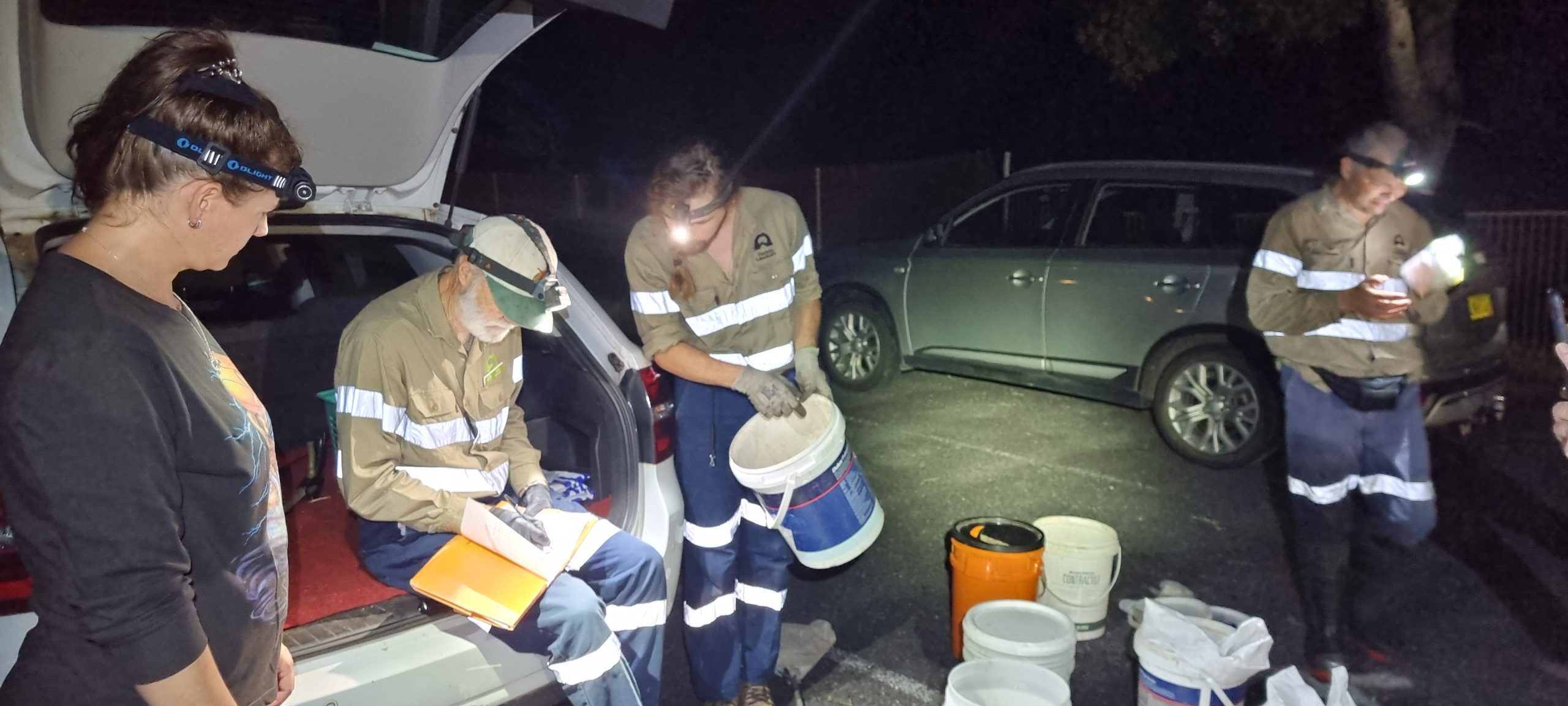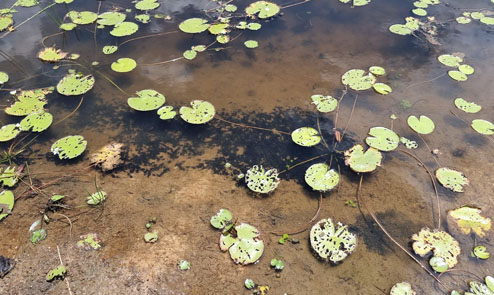Cane Toad Control
The Clarence Valley is the southern front line of the cane toad invasion in NSW. Clarence Landcare works at the front line to deliver community education and seasonal cane toad control programs.

Clarence Landcare cane toad control team.

Cane toad tadpoles commonly cluster in shallow water, seen here in a farm dam.
A population of cane toads has been established in the Yamba – Angourie area for about 30 years. The first of these toads are believed to have been transported from Queensland in building materials. From that initial establishment, further populations took up residence on Warregah Island, Micalo Island, and Palmers Island, in Townsend, and Mororo, and further south at Brooms Head.
Through the hard work and dedication of the Clarence Valley Conservation in Action Landcare group (CVCIA), these breeding populations were being contained. However, by 2018 cane toads had also established in Maclean, Gulmarrad, Taloumbi, Woodford Island, and Ashby. Aided by the fire events of 2019-20, the wet seasons that followed, and potentially assisted by human activities, cane toads are now reported at Shark Creek, Lawrence, Mountain View, and further west to Coaldale and Fortis Creek.
Why are they a problem?
Cane toads pose a serious threat to many species of native animals through poisoning and competition for resources.
Cane toads can also affect domestic pets, and potentially impact agricultural activities such as beekeeping.
What is being done?
In recent years, Clarence Landcare and Border Ranges – Richmond Valley Landcare Network have coordinated cane toad control efforts, liaised with biosecurity agencies and disseminated best practice control advice to the public. Funding from North Coast Local Land Services (NCLLS) and National Parks and Wildlife Service (NPWS) has enabled us to deploy field teams to monitor and control cane toads seasonally. Field officers undertake night-time hand collection and manage a trapping program aimed at adult cane toads and tadpoles. Landcare also works with the Department of Primary Industries (DPI) to respond to reports of cane toads in areas where toads have not previously been detected. This early intervention can greatly reduce the spread and even eliminate a small outbreak. However, our ability to carry out cane toad control work into the future is not guaranteed and depends on the continuation of funding each year. It is for this reason that community education is a critical component of
our work.
What you can do
The public is critical in the fight against cane toads, both at the invasion frontline and in areas with long-established populations. Although complete eradication may not be possible, local efforts to control cane toads have proven to reduce local numbers, which helps slow their spread and create toad-free havens.
Reducing cane toad numbers depends on people controlling cane toads on their property and reporting sightings to biosecurity agencies. By doing your bit to control cane toads on your property and in public spaces, you are helping to create safe havens for wildlife and reduce the spread of this invasive pest.

